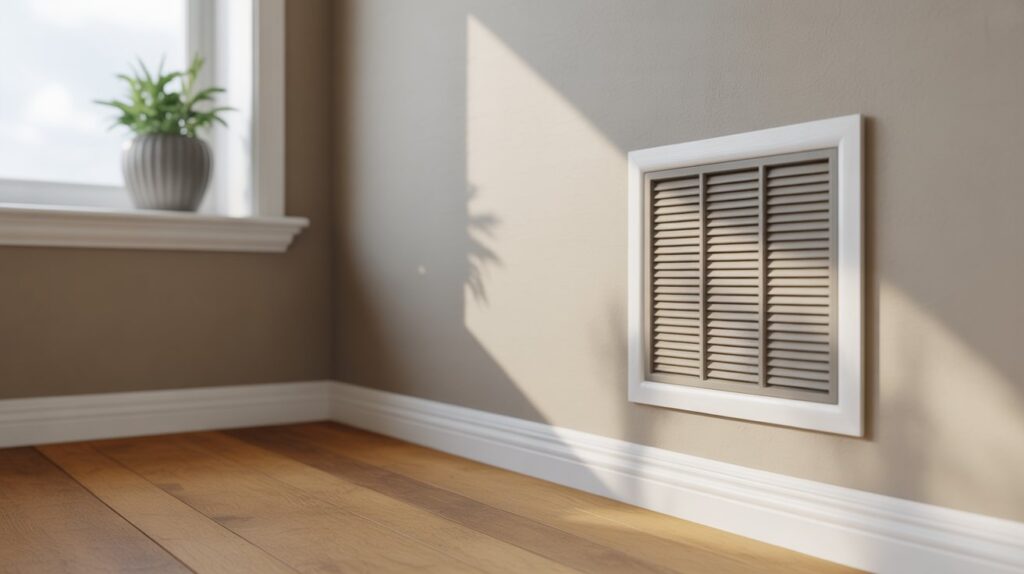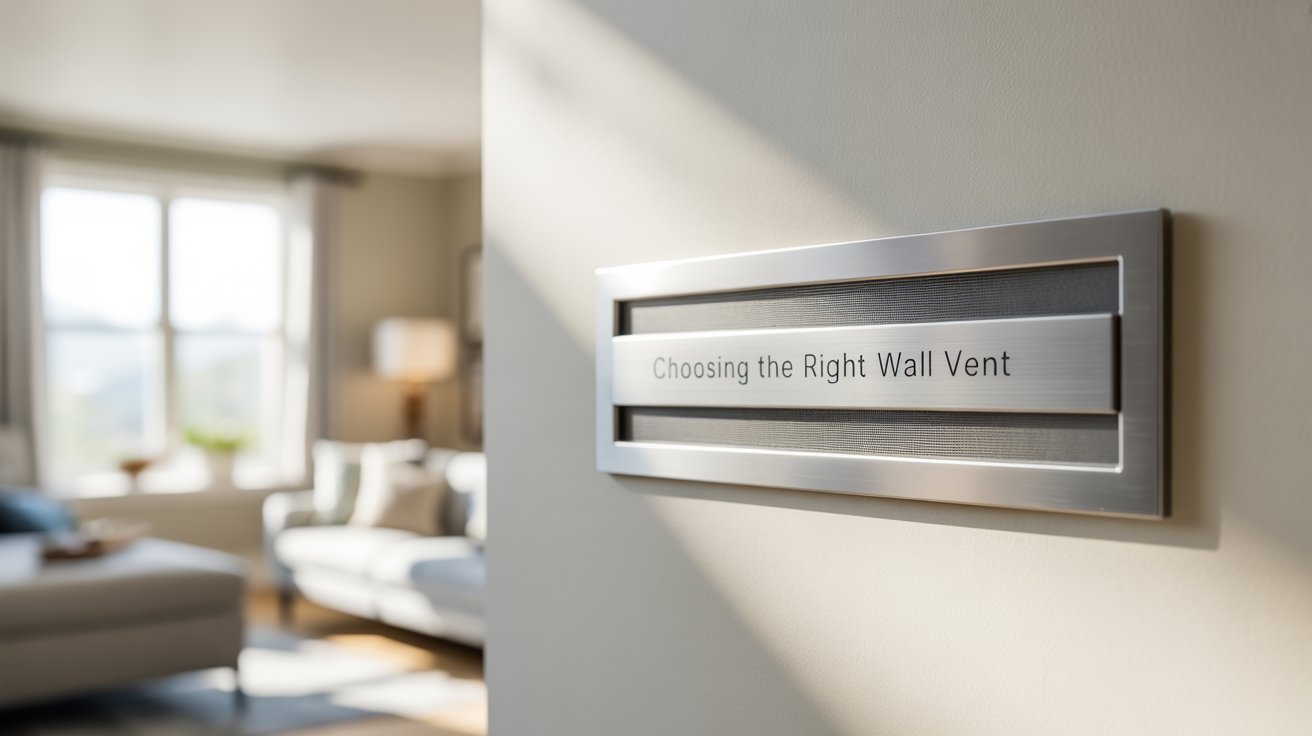A wall vent is a small but important part of your home that helps air flow in and out. Having a good wall vent means your house can breathe better. It keeps the air fresh, stops moisture from building up, and helps prevent mold. Without a proper wall vent, your rooms can feel stuffy or damp, which is not good for your health or your walls. If you want your home to stay comfortable and safe, choosing the right wall vent is an easy way to start. Whether you need one for your kitchen, bathroom, or attic, understanding how wall vents work can help you pick the best one.
Wall vents come in many shapes and materials, like metal, plastic, or aluminum. Some have screens to keep bugs out, and some include dampers that open and close to control airflow. Knowing the right type to use depends on where you want to put the vent and what you want it to do. For example, a vent for a dryer will be different from one used to bring fresh air inside. Picking the right size and style can also save energy and keep your home safe from pests and bad smells. This guide will help you learn everything you need to know about wall vents and how to choose the best one for your home.
How a Wall Vent Works to Keep Your Home Fresh
A wall vent helps air move in and out of your home, keeping the air fresh and clean. It allows stale air to leave and fresh air to enter, which stops the house from feeling stuffy or damp. By letting air flow, wall vents help control moisture, which can cause mold and damage. Some vents have special flaps called dampers that open when air moves and close to keep bugs and cold air out. Proper ventilation also helps remove bad smells from cooking or bathrooms. When a wall vent works well, it improves your home’s comfort and keeps the air healthier to breathe every day.
Different Types of Wall Vents and Their Uses
Wall vents come in many types, each made for different needs. Some vents are simple openings with a screen to keep bugs out. Others have dampers that open and close to control airflow, which helps save energy. You can find wall vents made for bathrooms to remove moisture, or for dryers to let hot air escape safely. Some vents are hooded to stop rain from coming in, while others are flush with the wall for a neat look. Knowing the different types helps you choose the right vent for your space, making sure your home stays dry, fresh, and comfortable all year long.
Why Choosing the Right Wall Vent Matters for Your Health
Picking the right wall vent is important because it affects the air you breathe at home. A good wall vent lets fresh air in and pushes out stale air, which helps remove dust, odors, and harmful moisture. Poor ventilation can lead to dampness, which grows mold and causes allergies or breathing problems. If the vent is too small or blocked, air can’t move well, making your home unhealthy. The right wall vent size and style help keep your rooms dry and fresh. This protects your family’s health by reducing the chance of mold, mildew, and indoor air pollution, making your home a safer place to live.
Wall Vent Materials: Which One is Best for Your Home?
Wall vents come in many materials like metal, plastic, aluminum, and copper. Each material has good points depending on where you use it. Metal vents, like galvanized steel, are strong and last a long time, good for places exposed to weather. Plastic vents are light and don’t rust, making them easy to install and low cost. Aluminum is also popular because it’s durable and resists rust. Copper vents look nice and last very long but cost more. Choosing the right material depends on your climate, budget, and where the vent will go. Picking the best material helps your vent work well and last many years.
Easy Steps to Install a Wall Vent Yourself
Installing a wall vent is a simple job you can do with some basic tools. First, choose where the vent will go, usually on an outside wall where airflow is needed. Next, measure and mark the spot, then cut a hole the right size for your vent. After that, fit the vent into the hole, making sure it’s level and secure. Use screws or nails to hold it in place and seal around the edges with caulk to keep water out. Finally, check that the vent flap or damper opens and closes smoothly. Doing it yourself saves money and makes sure your home gets fresh air.

How to Maintain Your Wall Vent for Long-Term Use
Keeping your wall vent clean and in good shape helps it work better and last longer. Check your vent a few times a year to remove dirt, dust, and leaves that can block airflow. You can clean the vent with a brush or mild soap and water. If your vent has a screen, make sure it is not torn and replace it if needed to keep bugs out. Also, inspect the damper to see it opens and closes freely without sticking. If you see rust or damage, fix or replace the vent right away. Regular care prevents problems and keeps fresh air flowing through your home.
Common Wall Vent Problems and How to Fix Them
Wall vents can face problems like blockage, rust, or broken dampers that stop air from flowing well. Dirt, leaves, and bird nests can block the vent opening, making your home stuffy or damp. If the damper is stuck, it may not open to let air out or close to keep pests away. Rust can weaken metal vents and cause holes. To fix these issues, first clean any blockages with a brush or vacuum. Lubricate the damper to help it move freely. If rust or damage is serious, replace the vent. Regular checks and quick fixes keep your wall vent working well.
Wall Vents for Bathrooms vs. Kitchens: What’s the Difference?
Bathroom and kitchen wall vents both help remove bad air, but they work a bit differently. Bathroom vents mainly remove moisture to stop mold and mildew from growing. They often have fans or stronger airflow to dry the air quickly after showers. Kitchen vents focus on removing smoke, cooking smells, and grease. Kitchen vents may connect to range hoods or exhaust fans to handle more smoke and heat. Both vents may have screens to stop bugs but differ in size and strength. Choosing the right vent for each room keeps your home fresh and clean.
Energy Savings with the Right Wall Vent
Using the right wall vent can help save energy and lower your bills. A vent with a damper opens only when needed, stopping cold or hot air from coming inside when closed. This helps your heating or cooling system work less and saves electricity. Choosing the correct vent size means air moves easily without forcing your system to work harder. Some vents also have insulation or covers to prevent heat loss. Good wall vent placement helps fresh air flow naturally, reducing the need for extra fans. Saving energy with the right vent helps the environment and your wallet.
How Wall Vents Help Prevent Mold and Moisture Damage
Wall vents help stop mold and moisture damage by letting damp air escape your home. When moisture builds up inside, it can cause wood to rot and mold to grow, which is bad for your house and health. Wall vents create airflow that dries wet areas like bathrooms, kitchens, or attics. Some vents have screens and dampers to keep rain and bugs out while letting air flow freely. By keeping your home dry, wall vents protect walls, ceilings, and floors from damage. Using the right vent and keeping it clean is an easy way to keep your home safe and mold-free.
Conclusion
A wall vent is a small but important part of your home. It helps fresh air come in and bad air go out. This keeps your house feeling nice and stops problems like mold and bad smells. By choosing the right wall vent and taking care of it, you make your home healthier and more comfortable for your family.
Remember, wall vents are easy to install and fix, and they save energy too. So, don’t forget to check your vents and keep them clean. A little care goes a long way in making your home fresh and safe!
FAQs
A: A wall vent lets fresh air into your home and pushes stale air outside.
A: It helps keep your home fresh, dry, and free from mold and bad smells.
A: Yes! With some basic tools and instructions, it is easy to install.
A: It’s best to clean your wall vent two to three times a year to keep it working well.
A: Metal vents last long outside, but plastic vents are good for easy installation inside.

